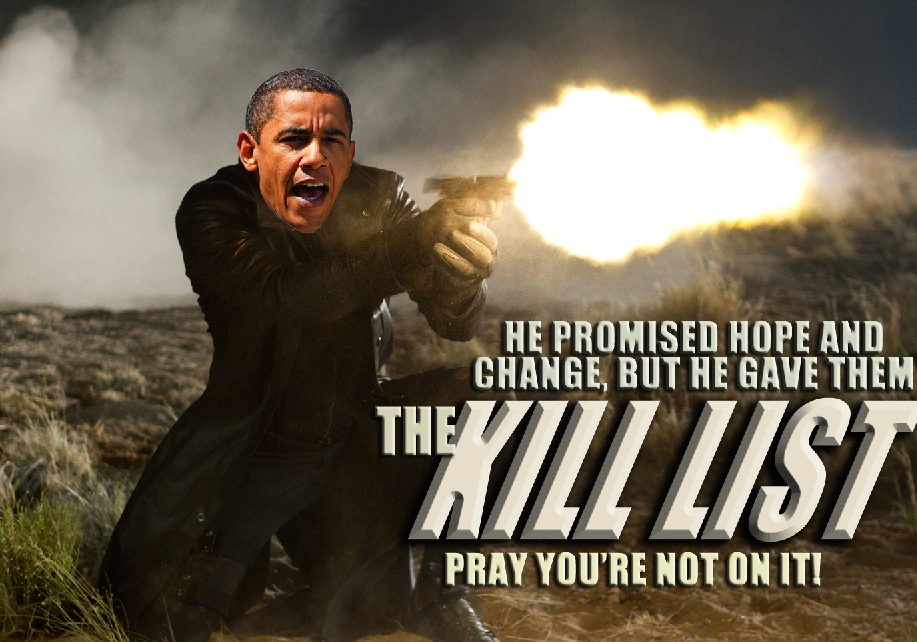
As the U.S. debates expanding its campaign against the Islamic State beyond Iraq and Syria, the leading U.S. civil liberties group is intensifying its efforts to force transparency about lethal U.S. counterterrorism strikes and authorities.
On Monday, the American Civil Liberties Union (ACLU) will file a disclosure lawsuit for secret Obama administration documents specifying, among other things, the criteria for placement on the so-called “kill list” for drone strikes and other deadly force.
Information sought by the ACLU includes long-secret analyses establishing the legal basis for what the administration terms its “targeted killing program” and the process by which the administration determines that civilians are unlikely to be killed before launching a strike, as well as verification mechanisms afterward to establish if the strike in fact has caused civilian deaths.
The suit, to be filed in a New York federal court, also seeks basic data the Obama administration has withheld about “the number and identities of individuals killed or injured” in counterterrorism strikes, according to the ACLU filing. In February 2013, Senator Lindsey Graham of South Carolina, who favors the drone strikes, estimated they had killed 4,700 people.
“Over the last few years, the U.S. government has used armed drones to kill thousands of people, including hundreds of civilians. The public should know who the government is killing, and why it’s killing them,” Jameel Jaffer, deputy legal director for the ACLU, told the Guardian.
The ACLU suit proceeds after the Obama administration disclosed none of the lethal counterterrorism documentation through a Freedom of Information Act request the civil liberties group launched in October 2013. According to the new lawsuit, the departments of state, justice and defense, as well as the CIA, have stonewalled the ACLU’s requests for nearly 18 months.
Recent legal history suggests the ACLU is in for an uphill court struggle. The Obama administration, which has called itself the most transparent in history, has thus far repelled or delayed ACLU lawsuits for disclosure around drone strikes and the 2011 assassination of Anwar al-Awlaki, a US citizen and al-Qaida propagandist. Additionally, the administration is fighting the ACLU on the legality of its bulk surveillance activities and to prevent the release of thousands of graphic photographs detailing Bush-era torture by the CIA and military.
Yet the administration has seen the courts chip away at its blanket denials of documents sought by the ACLU. Most of the intelligence community’s disclosures of surveillance memos since Edward Snowden’s revelations have followed the administration’s courtroom losses to the ACLU and other civil-liberties groups. In June, the second circuit court of appeals forced the Department of Justice to release much of a critical 2010 memo blessing the killing of Awlaki. (The ACLU is seeking the release of 10 more major intelligence memos related to targeted killing.)
Colleen McMahon, the federal judge who initially denied that memo’s release in 2013, ruled against the ACLU with regret, writing that loopholes in transparency laws benefitting the government left her “stuck in a paradoxical situation” that she likened to Alice in Wonderland. Since the new lethal-force lawsuit is related to the Awlaki one, McMahon may be the federal judge who hears it.
The new ACLU suit seeks to pierce the veneer of assurances by President Obama that the drone strikes and other lethal counterterrorism practices his administration has embraced have been restricted.
Obama announced he was raising the still-undisclosed standards for launching drone strikes in May 2013 and insisting on “strong oversight of all lethal action.” He said future strikes would require “near-certainty that no civilians will be killed or injured.”
His White House portrayed the acknowledgment of the strikes as a transparency milestone, but the administration still refused to disclose the processes and legal memoranda underpinning the speech.
While estimates indicate that the drone strikes, launched by both the CIA and the military’s Joint Special Operations Command, have declined since Obama’s speech, a November report by the human-rights group Reprieve found that Obama’s drone strikes had killed 1,147 people in pursuit of only 41 men, prompting questions about the rigor of the process employed by the administration to launch attacks.
Obama’s 2013 speech and the drone-strike decline also occurred before the 2014 rise of the Islamic State and the renewed US war in the skies over Iraq. Not only are Predator and Reaper drones used in airstrikes in Iraq and Syria, but the administration’s desired legal authorization against Isis would permit global targeting of the jihadist army and its far-flung affiliates – which now include Boko Haram in Nigeria as well as allies in Libya, the Sinai peninsula and beyond.
That authorization “wisely does not include any geographical restriction”, argued the new defense secretary, Ashton Carter, in congressional testimony last week, “because [Isis] already shows signs of metastasizing outside of Syria and Iraq.”
Jaffer told the Guardian there could be no “legitimate justification” for persistent official stonewalling on civilian casualties and the procedures by which people, including US citizens, can find themselves on a secret government “kill list.”
“The categorical secrecy surrounding the drone program doesn’t serve any legitimate security interest. It serves only to skew public debate, to obscure the human costs of the program, and to shield decision-makers from accountability,” Jaffer said.
3 WAYS TO SHOW YOUR SUPPORT
- Log in to post comments












